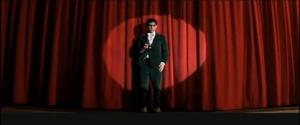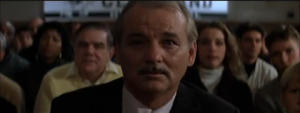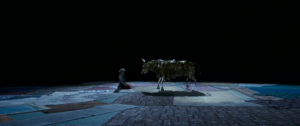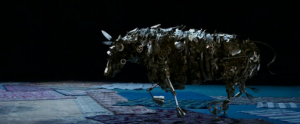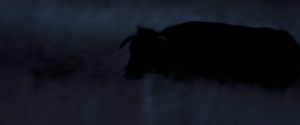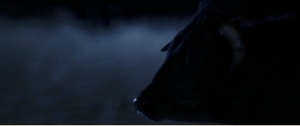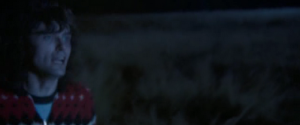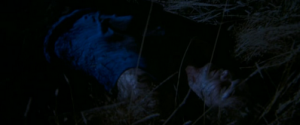I have previously written on this site about the ‘quirky’ cinematic sensibility, which is represented most clearly in the kinds of millennial and post-millennial American indie comedies and comedy-dramas brought to mind by names and titles such as Wes Anderson, Michel Gondry, Charlie Kaufman, Spike Jonze, Jared Hess, Miranda July, Buffalo ’66, Punch-Drunk Love, I Heart Huckabees, Lars and the Real Girl, Little Miss Sunshine,and so on. Here and elsewhere, I have spoken of the quirky as being linked in some way to the metamodern. Before going on to discuss some issues prompted by one movie in particular, I would first like to take a moment to be a little more explicit about what I consider the nature of this link to be.
The founding text for this site and the concept it explores, ‘Notes on Metamodernism’, of course suggests the usefulness of the metamodern for the realms of philosophy and cultural theory. But its great strength for me is that it also describes the metamodern specifically as an “emerging structure of feeling” – that is: as an example of Raymond Williams’ quixotic but indispensible sociological notion of how historical/cultural moments express themselves in “the most delicate and least tangible parts of our activity” (1965: 64), becoming a matter “of feeling much more than of thought – a pattern of impulses, restraints, tones” (1979: 159). Part of the appeal of this categorization is that – despite the grandiloquence of coining any new ‘ism’ – to call metamodernism a structure of feeling (rather than, say, an era or period) is to be appropriately modest, since there is always likely to be more than one structure of feeling at play in a society and culture at any one time.
Another benefit of understanding the metamodern as a structure of feeling (and not necessarily, say, a philosophical position) is that it acknowledges the extent to which it will be expressed culturally in terms of an emotional logic as much as by any other means. Specifically, a structure of feeling is liable to manifest itself in the form of several sensibilities (just as happened for the postmodern as a structure of feeling, with its attendant ‘nostalgia film’, ‘smart film’, and so on). I see the quirky as one amongst many of the sensibilities prompted by this contemporary structure of feeling.
As I have established in my most extended piece on the subject, the quirky sensibility can be identified by a number of features, including its approach to the comedic mode, its recurring stylistic traits, and its thematic preoccupations. But I have argued that perhaps its most important feature is its tone, which echoes a key aspect of the metamodern as Vermeulen and van den Akker define it: an oscillation between sincerity and irony, enthusiasm and detachment, naïveté and knowingness. Being in part an expression of a structure of feeling, then, the quirky is something which can itself be understood in large part in relation to the feelings it invites in the viewer.
I have previously discussed the tone of the quirky as if it remained broadly the same in all incarnations. Although careful to stress that the sensibility shouldn’t be seen as a box, but rather a sliding spectrum of aesthetic possibilities (with, for instance, a Napoleon Dynamite at one end, a The Squid and the Whale at another), I have not yet spent much time distinguishing in any precise way between the kinds of variations observable in different quirky films’ tones. I would thus like here to offer an example that might help us think about the range of tonal possibilities open to the sensibility.
In this year’s Wes Anderson: Why His Movies Matter, Mark Browning objects to Anderson’s supposed occasional tonal shifts from ‘ironic’ detachment to moments of ‘sincere’, melodramatic engagement with characters’ emotions:
It is very difficult to maintain a dominant tone of detached quirky irony and then expect audiences to engage emotionally with characters to the level where tears are expected. This kind of tonal seesaw does not really work. (2011: 62)
This passage came to my mind recently whilst watching one of the first British films to be transparently influenced by the hitherto largely American sensibility, Paul King’s 2009 movie Bunny and the Bull (Submarine is another). If Wes Anderson might occasionally be guilty of mismanaging his tone to the point of endangering our ability to empathise with characters at moments of pain, Bunny and the Bull pushes this trait several degrees further. In the process, it allows us to see some of the limits available within the sensibility’s trademark tone.
Not using ‘quirky’ in my sense of the term, Browning’s passage accuses Anderson of enacting sudden shifts from a distanced and ironic stance towards moments of uncomplicatedly sincere emotional expression with which we are expected to empathise in something like an ‘unmediated’ fashion. In my view, however, Anderson is on the whole extremely skillful in the way he envelops his entire films in largely the same melancholic, yet gently amused, tone. Recalling Vermeulen and van den Akker’s characterization of the metamodern as often offering tensions “between hope and melancholy”, comic moments in Anderson’s films tend always to still be slightly sad, sad moments still slightly comic. Looked at from another perspective, few moments in his films are ‘just’ sincere, and few are ‘just’ ironic; almost always there is a play of some kind going on between the two.
We might think of Max’s (Jason Schwartzman) Vietnam War play performed towards the end of Rushmore, entitled Heaven and Hell. This production, which would seem to require a Hollywood special effects team in order to render its spectacular Apocalypse Now-lite vision, is the culmination of a running gag whereby Max stages 70s-inspired gritty cinematic dramas as school plays. Patently absurd in conception, the play is also placed as somewhat naïve and pretentious, given its portentous title and ripe dialogue (“Adios. Say a prayer for Surf Boy… wherever he is”). And yet it seems clear that we are also asked to appreciate its passion, as well as the fact it moves Herman (Bill Murray), a Vietnam veteran whom we have learned was “in the shit”, to tears. The moment when Max is framed giving a peace sign in close-up, saying “Maybe we’ll meet again some day… when the fighting stops”, might seem purely ridiculous – ironic – until we cut to Herman watching with a supreme intensity.
At this point we still do not shift simply into a wholly ‘sincere’ register either, but rather exist somewhere simultaneously amusing and poignant between the two.
To help understand this strategy we could look to another sensibility of the metamodern: the New Sincerity (note: this phrase has been used by various people for differing purposes, but I’m thinking here of the term as rallied behind by a group of recent American poets – Andrew Mister, Joseph Massey, Anthony Robinson, and so on). “The New Sincerity,” writes Anthony Robinson in a blog post titled ‘A few notes from a new sincerist’, “has built-in irony. There’s nothing ‘new’ about sincerity” itself. As Jason Morris puts it, “a lot of the best poetry in which there seems to be a drive toward a kind of sincerity also seems intelligently aware it is always already arriving too late.” ‘Too late’ in this case means after postmodern irony has shaken its foundations. This is similar to the tone of a Wes Anderson film: striving for authenticity of emotion, qualified to a degree by ironic detachment, but questing nonetheless.
Bunny and the Bull, by contrast, is a film which does indeed for most of its running time maintain, in Browning’s words, “a dominant tone of detached irony”. Boasting an aesthetic that is strongly influenced by the quirky – and particularly Anderson/Michel Gondry/Jared Hess – most of the film is told via a flashback that takes the form of highly stylized, childlike, cut-out-cartoon locales and unreal landscapes. See, for instance, a cardboard restaurant near the opening:
The fact that the places they inhabit are always patently artificial doesn’t necessarily mean we couldn’t empathise with the characters in this film; any number of devices could be mobilised to try to bring the viewer into a close empathetic relationship with the central figures (see, to a lesser extent, The Royal Tenenbaums). However, despite the seemingly clinically depressed nature of the movie’s protagonist, Stephen (Edward Hogg), the film is determined always to undercut the integrity of its world and the feelings it potentially has at its disposal – often via either absurd surrealist humour that places us near the worlds of Monty Python (see: Julian Barratt’s dog-suckling cameo), or through bathetic bawdiness (at the moment when our hero finally goes to bed with the girl of his dreams, the camera pans away and we hear “Hmm, nice penis!”). This seems to be a film that is unconcerned with placing us into an empathetic relationship with its characters and reality – more Mighty Boosh than anything else (appropriately, given that director Paul King had his start on that show).
There is nothing necessarily wrong with this in principle, since it would seem simply to place the film nearer the more detached and artificial end of the quirky spectrum, where a film such as Napoleon Dynamite resides. However, very close to the end of the movie, the film reaches the key scene it’s been hinting at throughout: Bunny’s fateful encounter with a bull in a field. And at this moment of trauma the film attempts to mobilize empathy and sincerity incredibly suddenly, its emotional invitation emerging unheralded from beneath a veneer of otherwise “detached irony” – and all but literally.
The sequence begins with us in the artificial, naïvely-rendered fantasy world that the majority of the film has taken place in, with Bunny on the field/patchwork rug with the (at this point mechanical) bull…
…and Stephen watching from the wings by a nearby fence/stacked boxes:
However, just when it seems that Bunny might have bested the beast, dark music begins. At this, we begin quickly intercutting shots of what we have till now seen only as a Mechano-like toy (on a patchwork rug) with a real-life bull (in a real-life field)…
As it begins to charge Bunny, this pattern continues – frantic cuts between the stop-motion animal and its real-life counterpart…
From the moment it makes contact with Bunny onwards, we’re exclusively in the ‘real world’ – a world we’ve never before seen in this film. Stephen scrambles terrified over the fence, pursued by a handheld camera (a further aesthetic signifier of ‘real’), over to his fallen friend, who is now dead…
Seemingly believing that, if the film wants to elicit empathy from the viewer (which it quite clearly does), then it is necessary to strip away ‘artifice’ wholesale, Bunny and the Bull at this moment transforms itself into an entirely different sort of aesthetic object than it has previously been. The result is a huge tonal lurch which the movie cannot endure and remain coherent – precisely the kind of “seesaw” effect Browning claims takes place in Anderson’s films.
Yet no Anderson film attempts anything as clumsy as this. Indeed, Bunny and the Bull makes you realise quite how nuanced Anderson’s approach tends to be, reminding us that the reason the quirky sensibility moves us (at least, when it does) is that it is concerned above all with tonal tensions, not tonal shifts. As Robinson writes of the sensibility with which he aligns himself, “New Sincerity does not mean ‘total honesty’ or ‘complete fidelity to lived/actual experience’”. Nor does the quirky.
While clearly a descendent of the sensibility, Bunny and the Bull doesn’t have enough faith in this fundamental lesson of quirky cinema: sincerity doesn’t require a ‘real’ – merely, we might say, consistent relationships and attitudes towards the ‘real’. Still, such differences in approach simply go to show some of the variation available within this particular sensibility, and thus helps in some small way to further deepen our understanding of how the contemporary metamodern structure of feeling can manifest itself.
References
- Mark Browning, Wes Anderson: Why His Movies Matter(London: Praeger, 2011)
- Jason Morris, ‘The Time Between Time: Messianism & the Promise of a “New Sincerity”’, Jacket Magazine, 35 (2008), http://jacketmagazine.com/35/morris-sincerity.shtml
- Anthony Robinson, ‘A few notes from a new sincerist’ (2005), Lucky Error, http://luckyerror.blogspot.com/2005/07/few-notes-from-new-sincerist.html
- Timotheus Vermeulen & Robin van den Akker, ‘Notes on Metamodernism’, Journal of Aesthetics and Culture Vol. 2 (2010)
- Raymond Williams. The Long Revolution (Harmondsworth: Penguin, 1965)
- Raymond Williams, PoliticsandLetters:InterviewswithNew Left Review (London, New Left Books, 1979)

